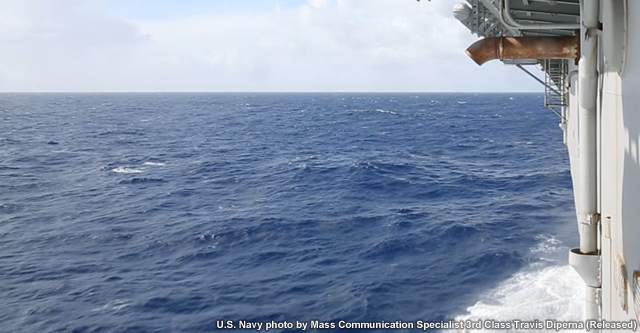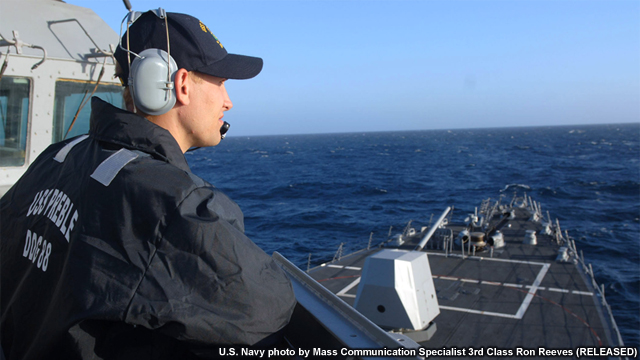Making the Observations

How you go about taking your hourly observations can vary a bit depending on the vessel, but in general, AGs have found it efficient to work from the bottom of the ship upward.
Starting on the lower deck, observe the seas. You'll want to be on the windward side of the ship and be able to look out to a distance of at least 50 yards to where the seas are unaffected by the ship. It can be useful to look at reported sea states for the previous hour to see if conditions appear to be the same or if they are changing.

Next, move upward to a high point where you are able to get the best 360-degree views. This will give you a good vantage point for the sky cover and visibility.
Temperatures and winds should be measured in a shady area out of direct sunlight and away from artificial heat sources that can set up temperature variations and microscale circulations or eddies. Also look for an open area where the wind is not blocked, channeled, or otherwise affected by the ship's structure.